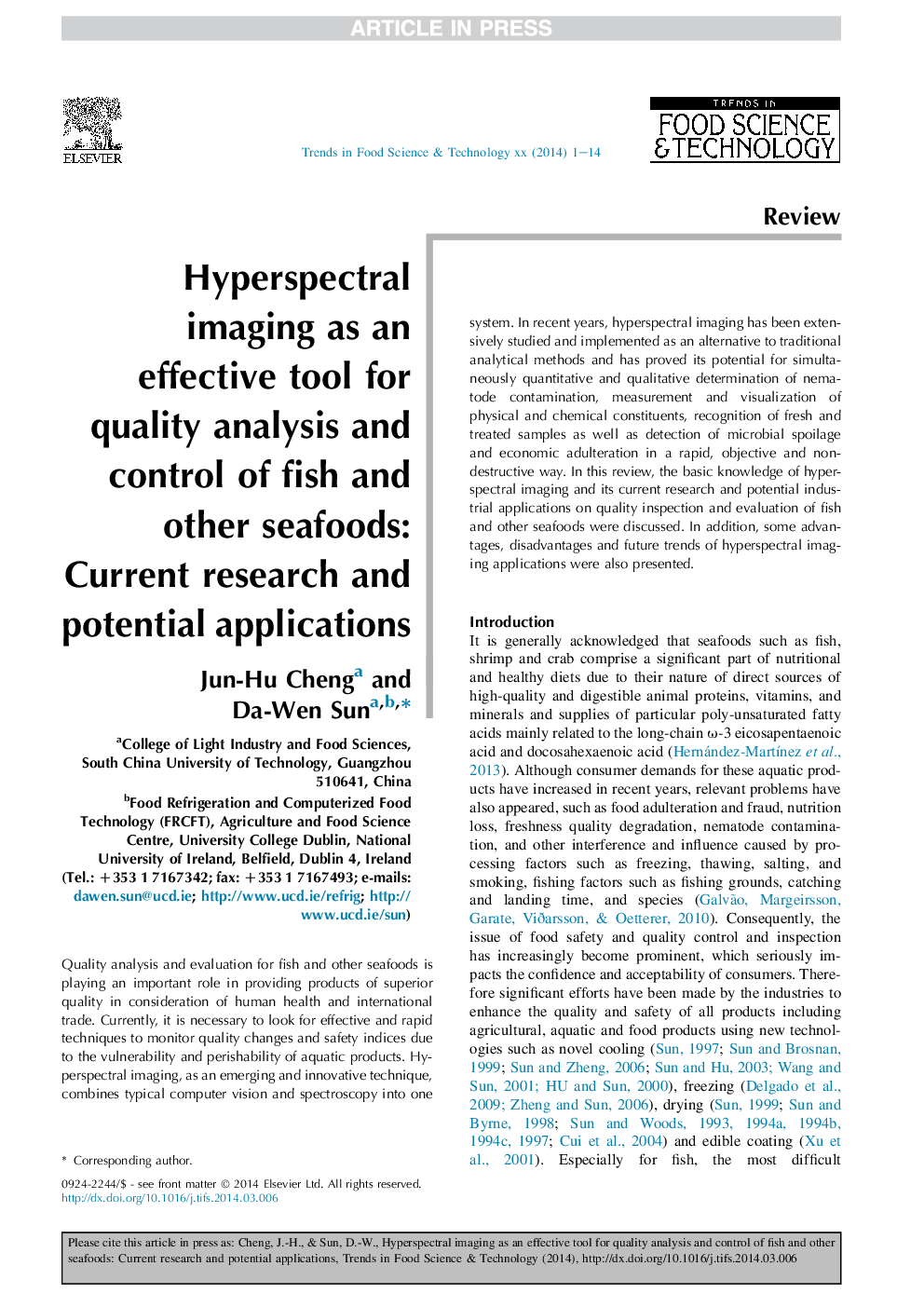| Article ID | Journal | Published Year | Pages | File Type |
|---|---|---|---|---|
| 10895158 | Trends in Food Science & Technology | 2014 | 14 Pages |
Abstract
Quality analysis and evaluation for fish and other seafoods is playing an important role in providing products of superior quality in consideration of human health and international trade. Currently, it is necessary to look for effective and rapid techniques to monitor quality changes and safety indices due to the vulnerability and perishability of aquatic products. Hyperspectral imaging, as an emerging and innovative technique, combines typical computer vision and spectroscopy into one system. In recent years, hyperspectral imaging has been extensively studied and implemented as an alternative to traditional analytical methods and has proved its potential for simultaneously quantitative and qualitative determination of nematode contamination, measurement and visualization of physical and chemical constituents, recognition of fresh and treated samples as well as detection of microbial spoilage and economic adulteration in a rapid, objective and non-destructive way. In this review, the basic knowledge of hyperspectral imaging and its current research and potential industrial applications on quality inspection and evaluation of fish and other seafoods were discussed. In addition, some advantages, disadvantages and future trends of hyperspectral imaging applications were also presented.
Related Topics
Life Sciences
Agricultural and Biological Sciences
Food Science
Authors
Jun-Hu Cheng, Da-Wen Sun,
